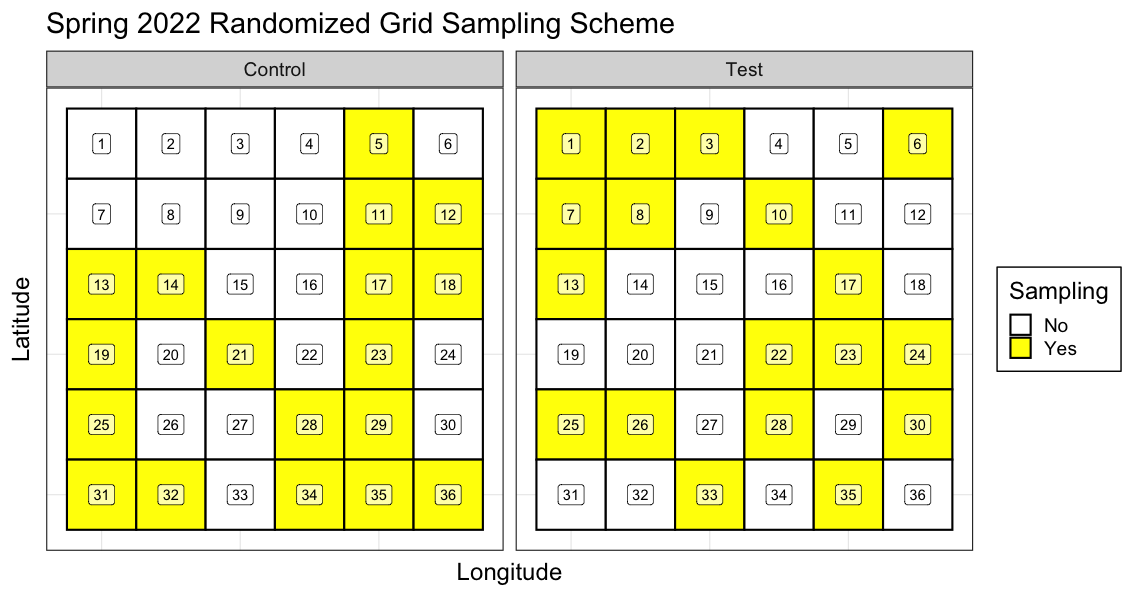Page Not Found
Page not found. Your pixels are in another canvas.
A list of all the posts and pages found on the site. For you robots out there is an XML version available for digesting as well.
Page not found. Your pixels are in another canvas.
Topics may include the US American lobster fishery, mark-recapture, offshore wind monitoring, stakeholder engagement and more
This is a page not in th emain menu
Published:
Today I am traveling to Australia to attend the International Conference and Workshop of Lobster (and Crab) Biology and Management, quite the mouthful.
Published:
Tomorrow I’ll be presenting the preliminary results from the basline commercial trapping survey at the American Fisheries Society annual meeting in Spokane, WA! It was a big push to get the data analysis to a point that it was presentation ready and then to actually create a presentation. The pre-recorded version of the presentation can be viewed here. The session is on Offshore wind and fishery interactions and I’m excited to see what sorts of thoughts people are having on the west coast about devveloping offshore wind energy and whether they are finding that lessons learned from east coast fixed-bottom wnd infrastructure ecological monitoring, siting and leasing problems is applicable to the floating-wind future they expect.
Published:
The spring survey was a crazy five week field season. Weather held throughout the survey allowing us to complete all 9 of our scheduled sample dates despite the slightly condensed schedule. We saw significantly less lobsters during the fall survey, especially in the landable / legal size class. Additionally, while in the fall survey the test site performed slightly better during the spring we seemd to catch more lobsters in the control site.
Published:
Today was our first haul for the spring iteration of the commercial trapping survey. Traps were set in each site on Thursday April 21, (2022) following last week’s gale and hauled after a four night soak.
Published:
The gale arrived last night in full force. While conducting the commercial trapping survey I stay on top of Horn’s Hill in the old weather station (presently the Flying Bridge) on Monhegan Island. This morning sometime between 7:30 and 8:50 AM the anemometer on top of the house recorded our daily maximum wind gust speed at 62 mph, a 10 on the Beaufort Scale. A 10 on the Beaufort Scale is described as ‘Storm’ and is rated one higher than ‘Severe Gale’.
Published:
Today I caught the 9:30 ferry out of Port Clyde for Monhegan Island, ME. Here as in the fall, I’ll be conducting the spring iteration of a baseline survey examining lobster catch and population dynamics in the Monhegan Island Lobster Conservation Area.
Published:
This week I spent a couple days driving around midcoast Maine visiting a variety of harbor’s lobster wharfs, co-ops, and pounds to distirbute fliers about reporting caught lobsters tagged by our study. To incentivize tag reports we set up a raffle with 5 tiered prizesz ($750, $500, $250, $125 and $125) and each tiem a tag is reported with useable data the reporter gets a raffle entry. Useable data generally means a valid tag ID, date of capture, and approximate location in latitude and longitude.
Published:
Today I got a chance to pick up this survey’s tags from the Darling Marine Center. For this survey iteration I ordered 8000 tags, 12 needles, and 3 tagging guns.
Published:
Trap locations are selected for the commercial trapping survey through random grid sampling. This method is adapted from the Ventless Trap Survey performed by Vineyard Wind I.
Published:
This past fall I spent 6 weeks on Monhegan Island (Oct. 8- Nov. 21) performing a commercial trapping survey with the help of local lobstermen to assess both population dynamics and catch metrics in the local fishery. In the survey 72 lobster traps were fished between two sites, Test and Control, for 36 traps/ site.
Published:
Graphical representation of the spring 2022 sampling scheme 
Published in Marine and Coastal Fisheries: Dynamics, Management, and Ecosystem Science, 2023
Over 20% of species showed preferential use ofputative and potential wind development areas, including a disproportionate number of forage taxa.
Recommended citation: Friedland, K. D., Adams, E. M., Goetsch, C., Gulka, J., Brady, D. C., Rzeszowski, E., Crear, D. P., Gaichas, S., McManus, M. C., Methratta, E. T., Morano, J. L., & Staudinger, M. D. (2023). Forage Fish Species Prefer Habitat within Designated Offshore Wind Energy Areas in the U.S. Northeast Shelf Ecosystem. Marine and Coastal Fisheries: Dynamics, Management, and Ecosystem Science, 15(e10230). https://doi.org/10.1002/mcf2.10230 http://everett-rzeszow.github.io/files/Friedland_etal_2023
Published:
Yang, M., et al. (Rzeszowski, E. 19th of 53 authors). NASA Student Airborne Research Program (SARP) Whole Air Sampling across the United States during the COVID-19 Pandemic. (December 2020). Abstract Number A025-07 at AGU Fall Meeting 2020. Remote.
Published:
LeVigne, M., et al. (Rzeszowski, E. 9th of 16). Paleoceanographic proxy reconstructions of Gulf of Maine pH: Coupling research and undergraduate learning goals in response to COVID-19. (December 2020). Abstract Number PP018-0006 at AGU Fall Meeting 2020. Remote.
Published:
Jarnot, A., et al. (Rzeszowski, E. 14th of 53 authors). Comparison of Trace Gas Trends in Urban Areas Collected via Whole Air Sampling during the COVID-19 Pandemic. (December 2020). Abstract Number A095-0001 at AGU Fall Meeting 2020. Remote.
Published:
 Rzeszowski, E.. Commercial Trapping Survey around Monhegan turbine: Methods and Motivations. (November 2021). RARGOM Annual Science Meeting 2021. Remote.
Rzeszowski, E.. Commercial Trapping Survey around Monhegan turbine: Methods and Motivations. (November 2021). RARGOM Annual Science Meeting 2021. Remote.
Published:
Published:
Course Coordinator, Aug. 2022 - Dec. 2022, University of Maine, School of Marine Sciences, Data Analysis in R, 1900
Teaching Assistant, Jan. 2019- June 2020, Bowdoin College, Earth and Oceanographic Studies, Introduction to Oceanography, 1900
